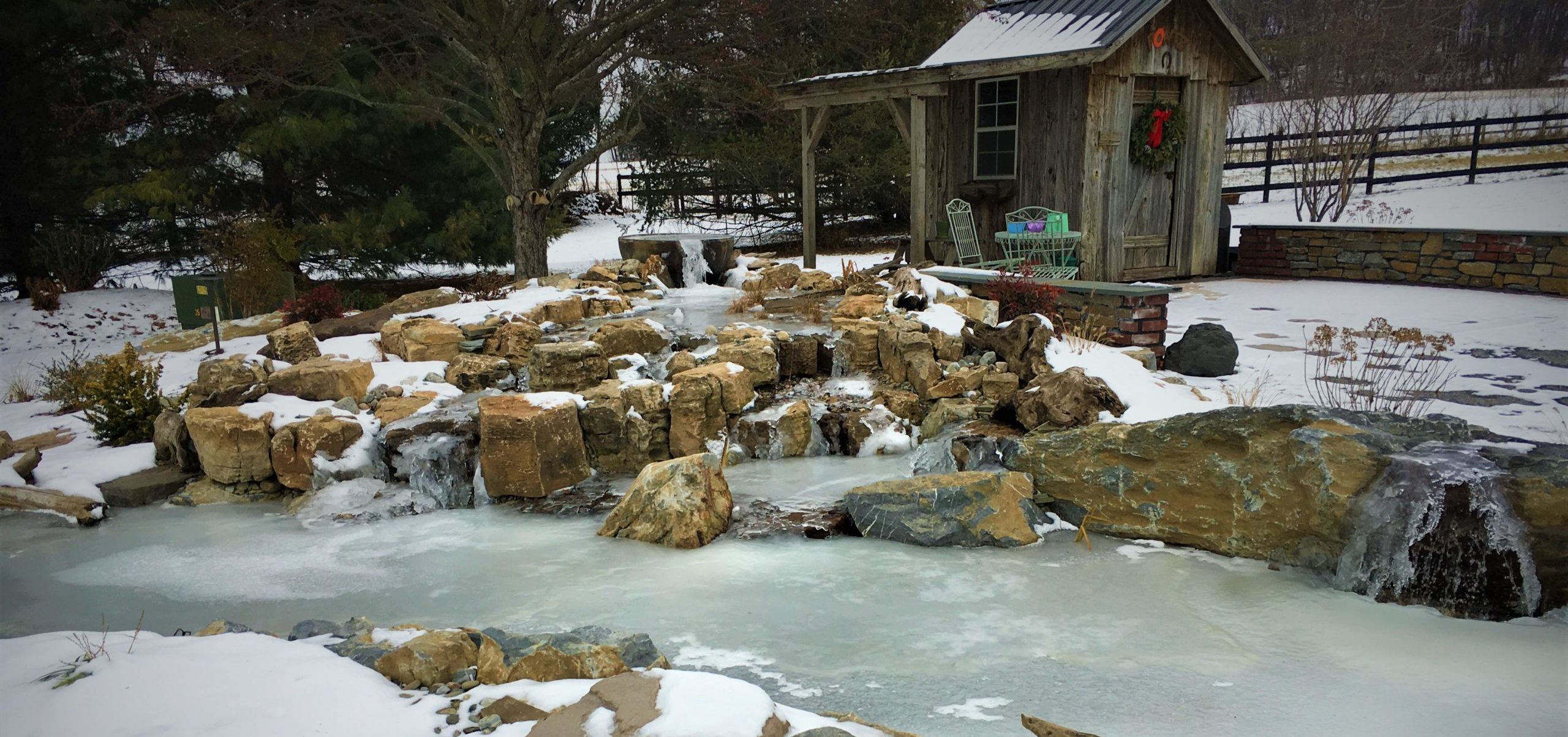Winter is sometimes a hard time for pond enthusiasts. You miss the tropical paradise that your fish and waterlilies provide for you during the summer months. As you stare at the snow and ice outside, it’s easy to fall into winter pond paranoia – wondering about your fish. Avoid unnecessary worries by arming yourself with a bit of knowledge so you can relax and enjoy the upcoming holiday season.

When you live in the northern part of the country, you know that your pond will be covered by a thick layer of ice for two to three months. After a couple of days of not being able to see your fish, you can’t help but wonder what you’re finned friends are thinking and doing under that ice. You know enough to keep an open hole in the ice for gas exchange, but it doesn’t provide you with a window to see if they’re okay.
Mystery Under the Ice
What’s really going on under that layer of ice, anyway? Are your fish resting comfortably? Are they right side up? Are you the only pond owner who gets freaked out by this disconnect from your fish? Short of sticking your head through the ice into the cold water, you simply want reassurance that your fish are okay.
Truth be told, what’s going on under there may be a direct result of how, or even if, you did anything to prepare your pond before the cold weather set in. A couple of different scenarios could be unfolding, depending on what actions you took.
If the pond has an abundance of debris on the bottom, it’s likely that there is a fair amount of parasite activity going on. Despite the cold water, parasites don’t sleep or become inactive. Instead, they thrive and multiply, and continue to have a party in the muck and debris on the bottom of your pond, unaffected by the low temperatures.
Eventually, the parasites will begin munching on your fish, who will be oblivious to this until the temperature begins to warm up. This is why you might see all the flashing and jumping in the spring as your fish attempt to dislodge the parasites. If the bottom of your pond is relatively clean, your fish are more than likely resting comfortably and peacefully.
Stop Feeding
Another unwanted and potentially devastating scenario can easily be avoided if you know when to stop feeding your fish. Follow our tried-and-true routine for cold weather fish care:
When the water temperature is steadily between 55- and 60-degrees Fahrenheit, feed your fish only once a day with Aquascape Premium Cold Water Fish Food Pellets (it’s low in protein and easy to digest). When the temperature drops below 55 degrees, stop feeding them altogether.
Even if it warms up for a few days, don’t start feeding them again. Any food that doesn’t get eliminated from the fish’s system before their metabolism slows down will putrefy and possibly kill them. Even if it doesn’t kill them, the dying nitrifying bacteria in the filter won’t be able to handle the waste load and will result in an ammonia spike that could be lethal to your fish. In the spring you’ll be left wondering what killed your fish because you won’t see any outward signs of illness.
It’s still early enough in the season to make preparations for the coldest months ahead. Use a pond net to skim debris and try to collect as many leaves and sticks off the bottom of the pond as possible. You can also download our free Winter Pond Care e-book for additional help and information.

